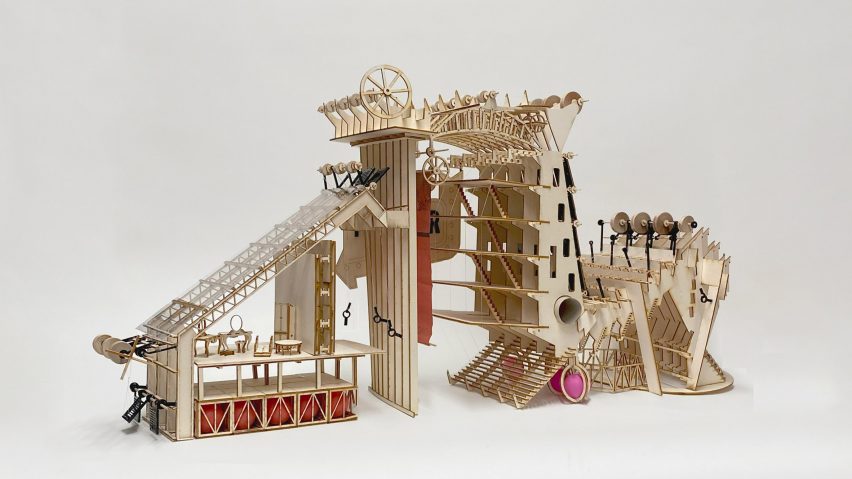
Fifteen architecture projects by students at The Bartlett School of Architecture
Dezeen School Shows: a project which proposes using clay waste from projects like HS2 towards 3D-printed and ceramic architecture is included in Dezeen's latest school show by students at The Bartlett School of Architecture.
Also featured is a library intended to assist with learning languages and a stadium which draws on Japanese principles of timber construction.
The Bartlett School of Architecture
Institution: UCL
School: The Bartlett School of Architecture
Courses: Architecture BSc (ARB/RIBA Part 1), Architectural & Interdisciplinary Studies BSc, Engineering & Architectural Design MEng (ARB/RIBA Part 1, CIBSE & JBM), Architecture MSci (ARB Part 1 & 2), Architecture MArch (ARB/RIBA Part 2)
Tutors: Farlie Reynolds, Sophie Reed, Elizabeth Dow, Luke Olsen, Murray Fraser, Alicia González-Lafita, Sara Martínez Zamora, Sara Shafiei, Matthew Butcher and Kostas Grigoriadis
School statement:
"The Bartlett School of Architecture has been recognised as the world's leading institution for studying architecture.
"Renowned for its innovative approach to architectural education, The Bartlett continually sets high standards in the field.
"Each year, the school's eagerly awaited summer show showcases the immense talent and forward-thinking perspectives of its students with a global audience, both online and in-person.
"The diversity of projects and resonance of thematic concerns exhibited allows audiences to explore what is meant by 'architecture' and what it could be."
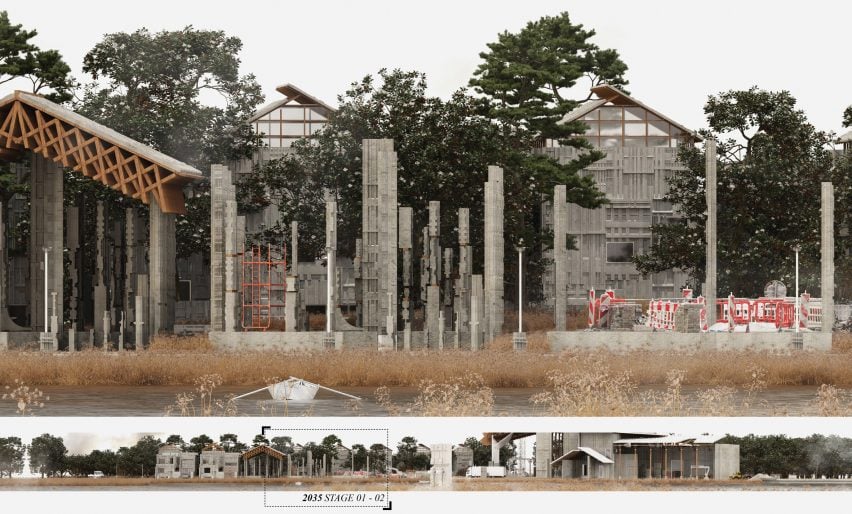
Land, Building and Dwelling by Yaowen Zhang
"This project develops and tests experimental construction methodologies for housing in the context of Martin Heidegger's concept of learning to 'dwell'.
"Sited in Rotterdam, the project begins with detailed analyses of the local marine and riparian clay deposits and proposes innovative modular construction techniques using these local materials.
"On a local scale, the scheme develops continuous interaction between building, land and resident.
"Ultimately, traditional 'linear' models of construction are replaced by a series of circular processes that feed into a masterplan comprising factory, landscape and housing units."
Student: Yaowen Zhang
Course: Architecture BSc (ARB/RIBA Part 1), UG9
Tutors: Chee Kit Lai and Doug John Miller
Email: yaowen.zhang.21[at]ucl.ac.uk
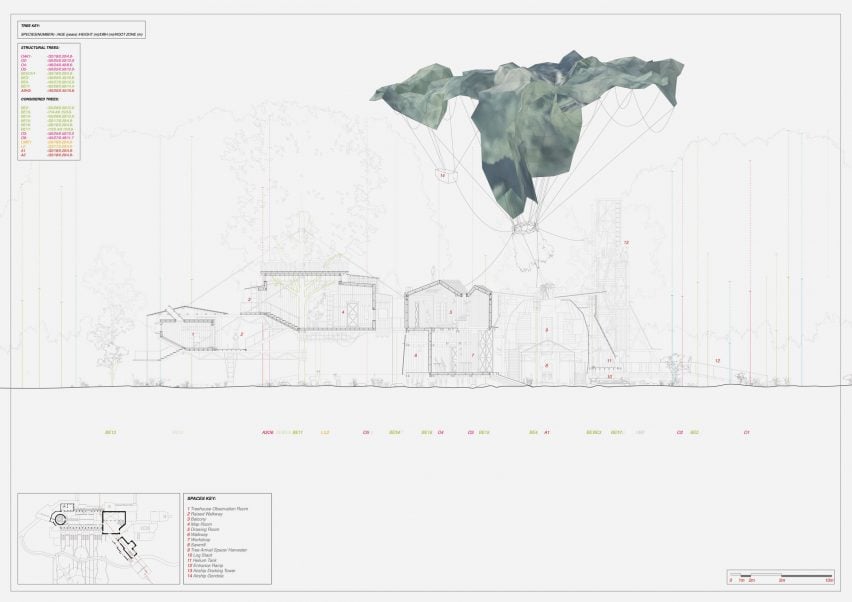
Ballonparken Logging Company by Elliot Woolard
"Ballonparken, a 'free town' community in central Copenhagen, spreads into the neighbouring park woodland, constructing and inhabiting its own hidden, growing architecture to care for and manage the forest.
"The project – a covert community sawmill and forestry – interrogates the relationship architecture can have with its surroundings.
"It critiques unsustainable and invasive practices within the logging and construction industries and offers a unique alternative that engages with trees and the forest in a more considerate way.
"Each programmatic element of the building honours the lifecycle of a tree.
"Timber milled in the sawmill is used to construct the rest of the building within the carpentry workshop and finally composted at the end of its lifetime."
Student: Elliot Woolard
Course: Architecture BSc (ARB/RIBA Part 1), UG13
Tutors: Laurence Blackwell-Thale and William Victor Camilleri
Email: elliot.woolard.22[at]ucl.ac.uk
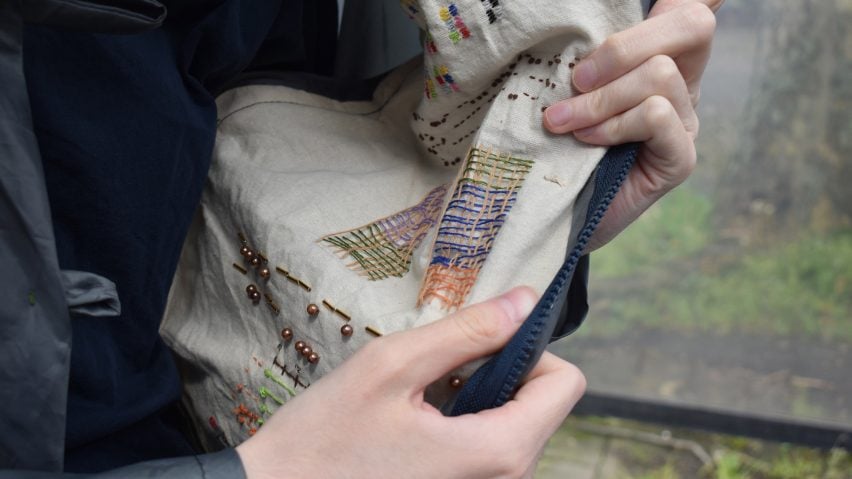
(De)coding the Stitch by Freya Leonard
"This project explores the translation and encryption of urban resources into a delicate textile language.
"It responds to the question: how can sewing practices facilitate a discrete transferral of information?
"The work is situated in a contemporary context of women's refuge, culminating in the creation of an embroidered garment that reveals crucial resources to the wearer as they navigate to safety.
"It therefore reflects a need for both creative material experimentation and social sensitivity, demonstrating the power of unspoken codes in providing aid to high-risk demographics in the city."
Student: Freya Leonard
Course: Architecture & Interdisciplinary Studies BSc
Tutors: Elizabeth Dow, Kevin Green and Freddy Tuppen
Email: freya.leonard.21[at]ucl.ac.uk
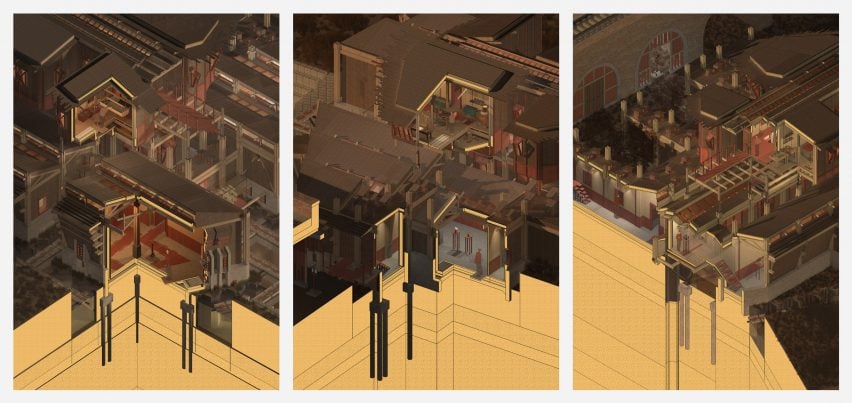
Mnemonic Museum of Shipbuilding by Maria (Mat) Vogeler Balcázar
"Deptford Creek's rich shipbuilding history has long been forgotten.
"This museum acts as a mnemonic device for the construction of a collective memory of Deptford's shipbuilding past.
"Centred around Mary Lacy (1740–1795), a carpenter and shipwright, the building is divided into a chronological succession of galleries representative of the 16th to 21st centuries with a private residence for Lacy, who, as the museum's carpenter, crafts a new apparatus every high tide.
"Visitors build a collective memory of Deptford's shipbuilding history by revisiting the museum and encountering the new artefacts."
Student: Maria (Mat) Vogeler Balcázar
Course: Engineering & Architectural Design MEng (ARB/RIBA Part 1 CIBSE JBM), Unit 3
Tutors: Daniel Godoy Shimizu, Thomas Hesslenberg and Graeme Williamson
Email: maria.balcazar.20[at]ucl.ac.uk
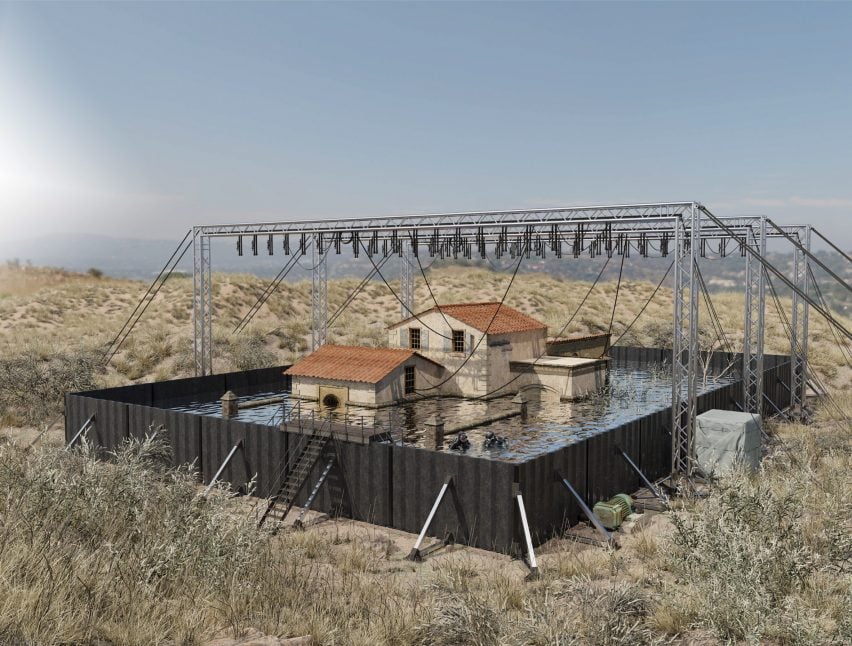
Ministry of Rural Catastrophe by Tiger Campbell-Yates
"This new specialist research body advises the Catalan Ministry of Agriculture, Livestock, Fisheries and Food, an overburdened department located in Barcelona.
"The proposal forms a research community in the hills of El Garraf for developing new techniques in disaster response and recovery, finding novel ways to mitigate the harmful effects of major natural catastrophes.
"The site has experienced numerous agricultural challenges typical of rural Catalunya, including forest fires, blight, plagues, lack of surface water, flooding and seismic activity, while still being relatively close to the region's political centre of Barcelona.
"The community uses traditional knowledge and modern simulations to create a disaster recovery framework that can be replicated across the region, while training first responders in full-scale test beds of catastrophe."
Student: Tiger Campbell-Yates
Course: Engineering & Architectural Design MEng (ARB/RIBA Part 1 CIBSE JBM), Unit 5
Tutors: Matthew Heywood, Aurore Julien, Filip Kirazov and Luke Olsen
Email: tiger.campbell-yates.20[at]ucl.ac.uk
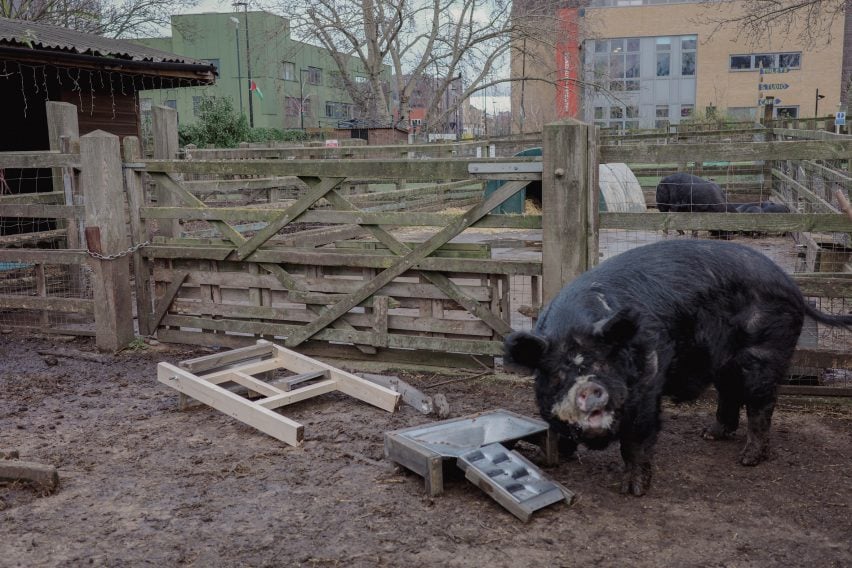
London à la Carte by Forrest Xie
"The current food system within the UK is severely broken.
"From the mid-17th century, the agricultural revolution shifted production methods and efficiency processes to reduce labour costs and make foodstuffs more affordable for end consumers.
"However, the costs of producing food were transferred from monetary to environmental.
"In this project, a new link between rural and urban is explored within the context of London, reinterpreting the centuries-old practice of nomadic pastoralism and communing.
"The investigation reveals how a now-urban model of transhumance can serve as an educational link between consumption and production, unlocking unused land within a dense metropolis and feeding those who need it most."
Student: Forrest Xie
Course: Architecture MSci (ARB Part 1 and 2), Studio 3A
Tutors: Murray Fraser and Michiko Sumi
Email: forrest.xie.21[at]ucl.ac.uk
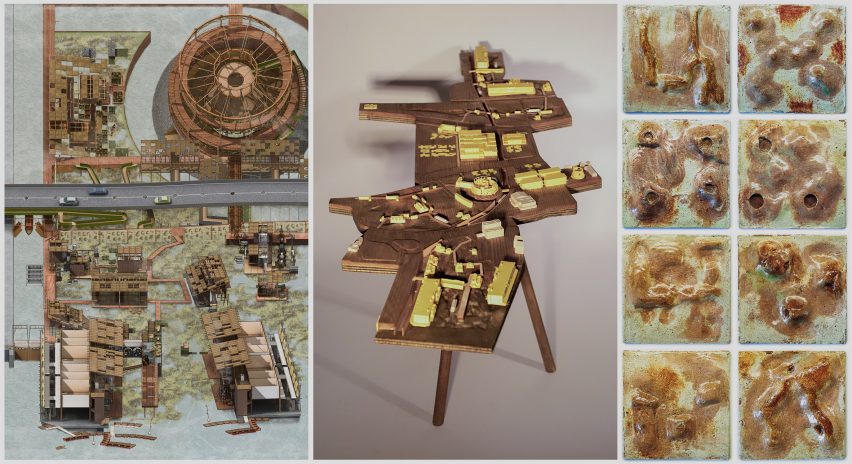
Rejuvenating the Veins of Tidal Marsh by Jihoon Baek
"The project envisions retrofitting London's post-industrial waterfront landscape into an inhabitable energy reserve that can mitigate fuel poverty and social isolation.
"Greenwich Peninsula exemplifies current urban regeneration practice where homes are isolated sanctuaries and the River Thames's ecology is engaged with passively.
"By reshaping the emotive language of London's vanishing coal-gas technology into a new 'third landscape', this riverside rewilding proposal embodies a marshland blanket that embraces humans, non-human organisms and energy, holistically creating a symbiotic community mediated by the Thames's daily tides."
Student: Jihoon Baek
Course: Architecture MSci (ARB Part 1 and 2), Studio 3A
Tutors: Murray Fraser and Michiko Sumi
Email: jihoon.baek.20[at]ucl.ac.uk
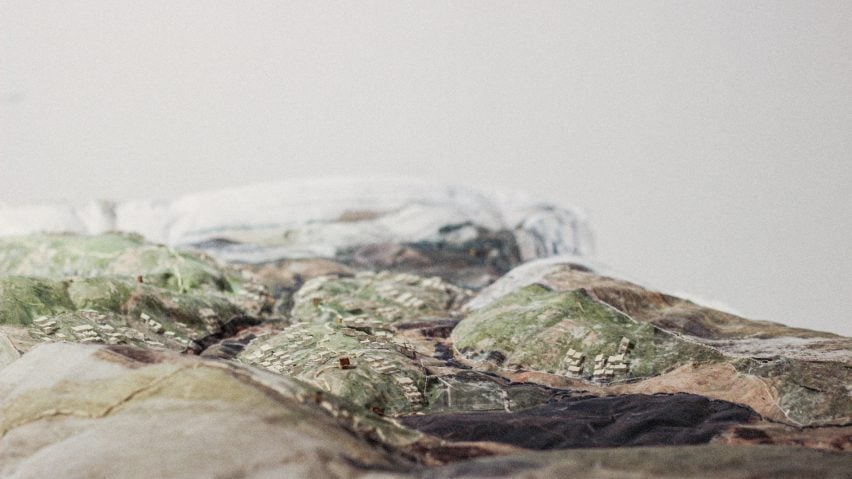
Barrington North: The Geology of a Village by Anna Williams
"The project explores concepts of transplantation, both of identity and material.
"It envisages a future design strategy for the rapidly changing parish of Barrington in response to an influx of 15 million tonnes of urban soil.
"The project follows the journey of the incoming urban soil from the high-speed railway network, HS2, through its infilling of a local quarry to its role in the creation of a new village typology.
"It narrates the potential of Barrington North if an opportunistic approach is taken towards the current context, thereby fostering a unique sense of place derived from two intertwined material systems: that of extraction (Barrington Cement Works) and that of infilling (HS2 landfill).
"The project proposes a design that respects their legacy and supports everyday life within a new artificial topography, using the incoming soil for practical advantage and in forging a new identity for the parish."
Student: Anna Williams
Course: Architecture MSci (ARB Part 1 and 2), Studio 4A
Tutors: Johan Hybschmann and Matthew Springett
Email: anna.williams.20[at]ucl.ac.uk
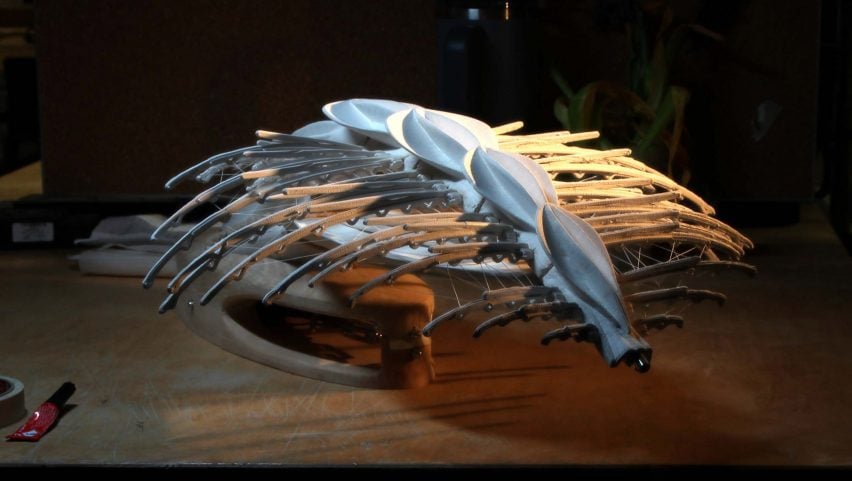
Emerging Ceramic Systems by Josef Stoeger
"Every day around 7,000 tonnes of 'waste' clay are sent to landfill from excavation and construction projects in London such as HS2 or the Thames Tideway Tunnel.
"This is an incredibly large resource stream and represents a golden opportunity to use this material to design and build future architectural projects.
"This project explores the potential for 3D-printed, post-tensioned ceramic systems which have the potential to be made from waste streams and bring to physicality the intelligence of organic and data-driven design methodologies."
Student: Josef Stoeger
Course: Architecture MArch (ARB/RIBA Part 2), PG15
Tutors: Enriqueta Llabres Valls and Egmontas Geras
Email: josef.stoger.17[at]ucl.ac.uk
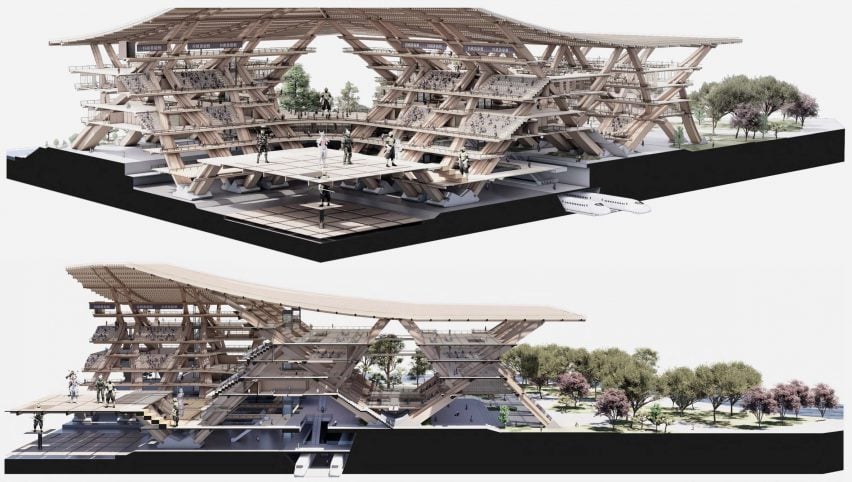
Figures Play: The Mind Sports Stadium by Ayaka Sato
"The project explores the structural principles of traditional Japanese timber construction for designing a large-scale stadium in Tokyo.
"Sited in Odaiba, a high-tech entertainment zone, the project proposes a stadium that integrates mecha robots with mind sports as a new entertainment typology, providing Japan's hyper-aged society with new opportunities.
"The overall structural system is developed by integrating traditional Japanese flexible timber structures and the reciprocal stacking method.
"The system functions as a component that can be combined to form a more extensive system for a substantial roof on a large scale.
"The movement of figures establishes the spatial arrangement, and an atrium promenade is introduced to respond to players of varying skill levels."
Student: Ayaka Sato
Course: Architecture MArch (ARB/RIBA Part 2), PG14
Tutors: Jakub Klaska and Dirk Krolikowski
Email: ayaka.sato.22[at]ucl.ac.uk
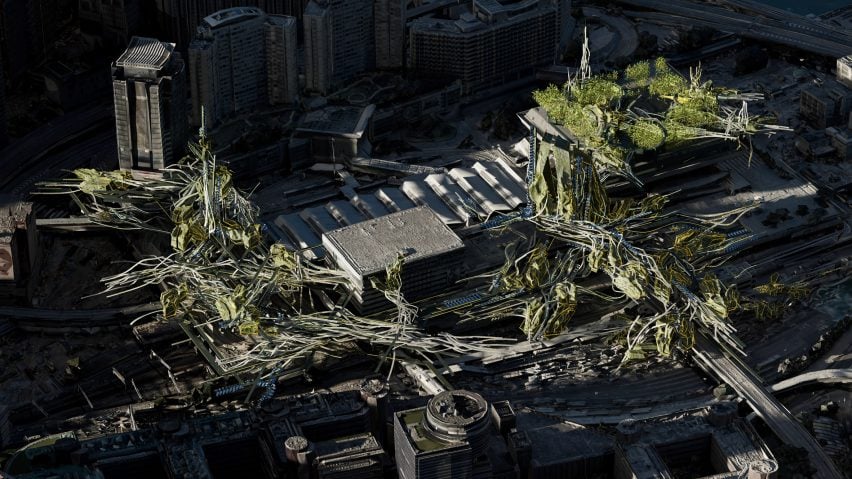
The Anthropogenic Leech by Matthew Choy
"Addressing the locality of pollution within our built environment, the anthropogenic leech is a decentralised community hub that converts carbon emissions into renewable energy.
"Employing a parasitic philosophy, the infrastructure attaches itself to energy-inefficient buildings throughout the city of Hong Kong, exploiting their resources systemically as a holistic system.
"In this parasitic approach, environmentally vulnerable buildings are seen as hosts with unrealised potential to be colonised and exploited.
"The host, despite showing little resemblance of what it once was, perseveres functionally as a part of the city's post-carbon narrative.
"Ultimately, the intervention rethinks parasitism as a negative term and creates climate-resilient cities that will withstand the test of time."
Student: Matthew Choy
Course: Architecture MArch (ARB/RIBA Part 2), PG20
Tutors: Marjan Colletti, Javier Ruiz Rodriguez and Tony Le
Email: chi.choy.22[at]ucl.ac.uk
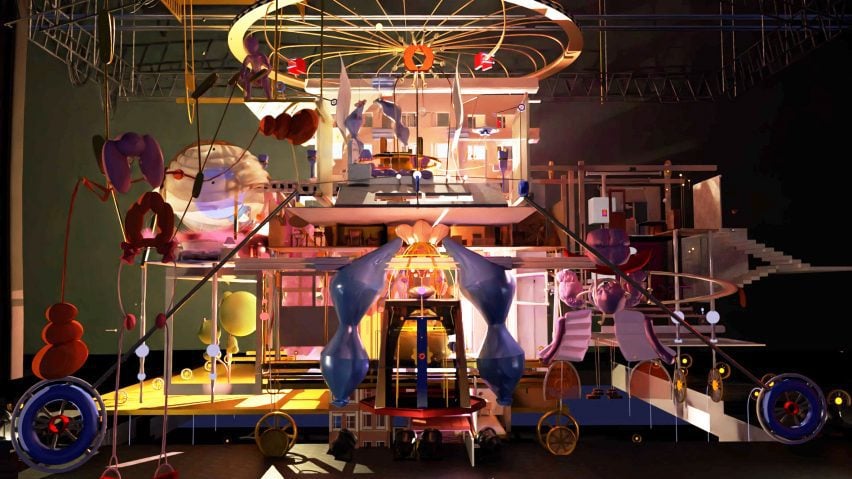
The Domestic Alien by Beatrice Frant
"Developed as a three-act play set between Bucharest and London, the theatrical set defines the female psyche as a tangible way to inhabit domestic architecture.
"The project addresses the lack of belonging in familiar spaces, using ficto-critical narratives to visualise the alienating experience.
"It analyses socio-political situations in which women felt confined by their homes, combining transformative structures with accurate site portrayals.
"Additionally, the project proposes a visual reinterpretation of the female body as an othered 'alien' through the use of inflatables.
"By choosing the kitchen, the bedroom and the bathroom to depict the stage set, it questions whether buildings can respond to the specific psychological needs of a woman/alien."
Student: Beatrice Frant
Course: Architecture MArch (ARB/RIBA Part 2), PG24
Tutors: Penelope Haralambidou and Michael Tite
Email: beatrice.frant.18[at]ucl.ac.uk
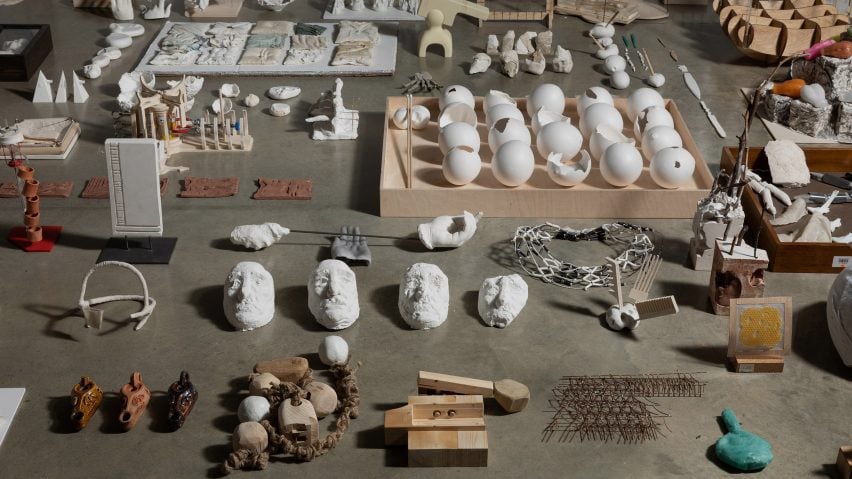
Atlas for the Future by Architecture BSc Year 1 Students
"This year, first year Architecture BSc students embarked on their academic journey with the Petrie Museum of Egyptian Archaeology at UCL, home to an extensive collection of 80,000 Egyptian and Sudanese artefacts.
"This initial project served as a reflective exploration of deeper historical periods, which informed understanding of contemporary and future challenges, such as cultural interpretations and material scarcity amid climate volatility.
"Students were prompted to consider how architectural craftsmanship could integrate preservation, reuse and adaptation while also innovating and creating new materials to craft spaces and reshape the environment.
"Each participant crafted their own Atlas for the Future, comprising drawings, models and catalogues."
Students: Architecture BSc Year 1 Students
Course: Architecture BSc (ARB/RIBA Part 1), Year 1
Tutors: Year 1 Design Team Tutors
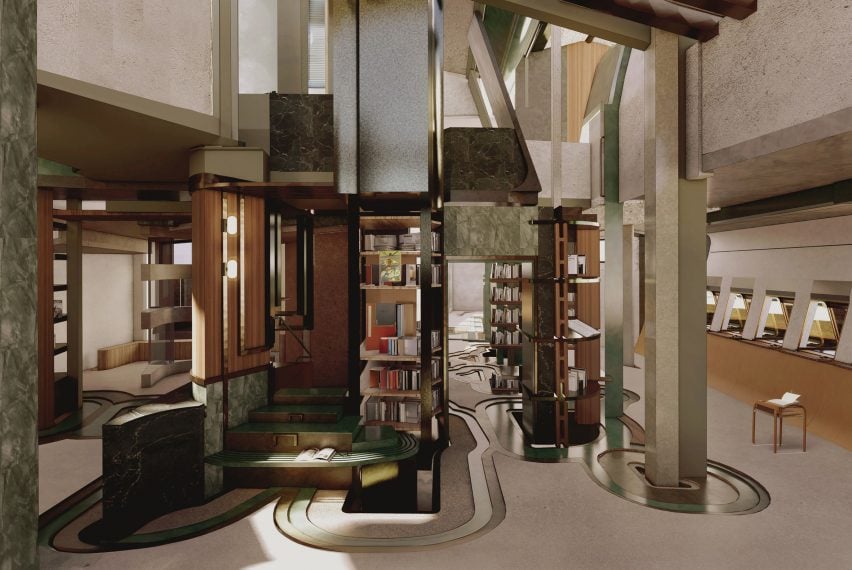
Lexicon: Language as a Drawing Tool by Ariel Alper
"The project identifies a link between language, grammar and architectural space.
"With the creation of a visual lexicon, made using linguistic descriptions of spatial experiences, a new type of architecture is created where words and their rhythm help to define the building at multiple scales.
"In this way, the words used to describe architectural ventures become the ones used to design them.
"Situated in Athens, Greece, the project encompasses a language centre and translation library.
"It embodies the design process itself while serving as a community hub where individuals can engage with language learning, global media and diverse cultures in Greece and beyond."
Student: Ariel Alper
Course: Architecture BSc (ARB/RIBA Part 1), UG3
Tutors: Daniel Dream, Ifigeneia Liangi and Vasilis Marcou Ilchuk
Email: ariel.alper.21[at]ucl.ac.uk
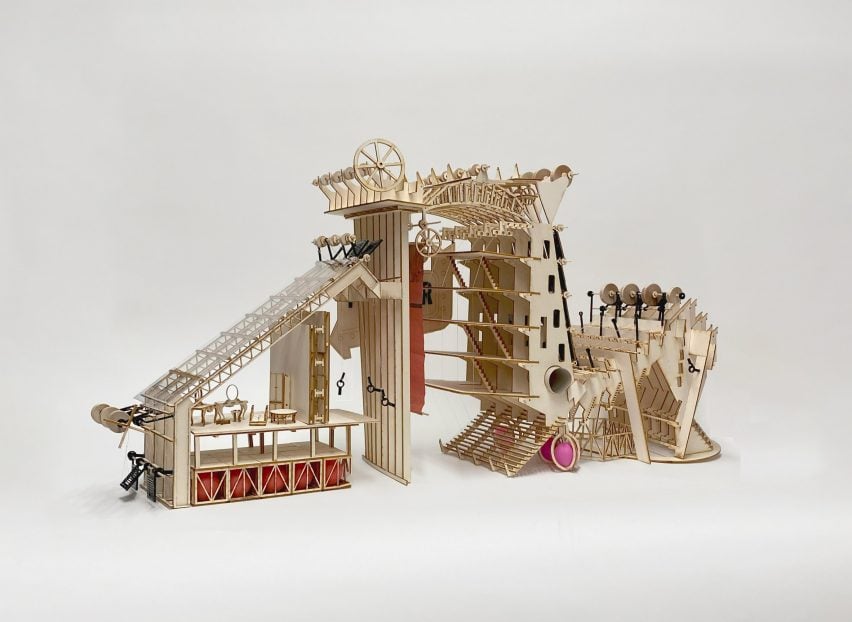
Flooding: The Anatomy of Propaganda by Aleksandra Lemieszka
"In the face of an ever-rising tide of misinformation, this project aims to create a home for unbiased, free media.
"Located in Ghent, Belgium, the proposal retrofits an old meat market into a printing hall.
"An extension hosts a museum of propaganda and a school of journalism.
"The suspended printing machine, visible to museum visitors, symbolises transparency, as it rises above the flood of propaganda.
"Journalists remain anonymous to prevent leaks and undue influence, with newspapers dispatched through secret canal passages, delivering on the project's goal of preserving truthful and independent media."
Student: Aleksandra Lemieszka
Course: Engineering & Architectural Design MEng (ARB/RIBA Part 1 CIBSE JBM), Unit 4
Tutors: Yasemin Didem Aktas, Arianna Guardiola-Víllora, Alexis Koufakis, Daniel Ovalle Costal and Santiago Vélez
Email: aleksandra.lemieszka.20[at]ucl.ac.uk
Partnership content
This school show is a partnership between Dezeen and The Bartlett School of Architecture. Find out more about Dezeen partnership content here.